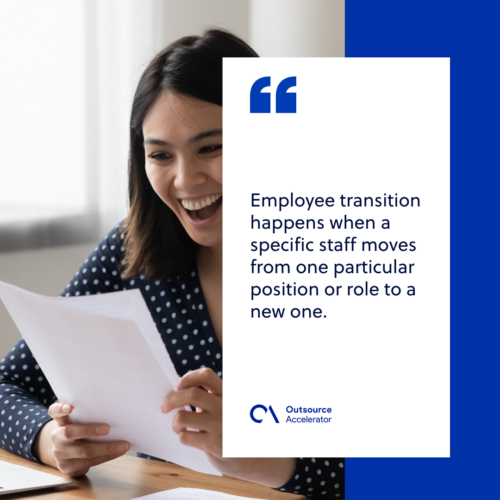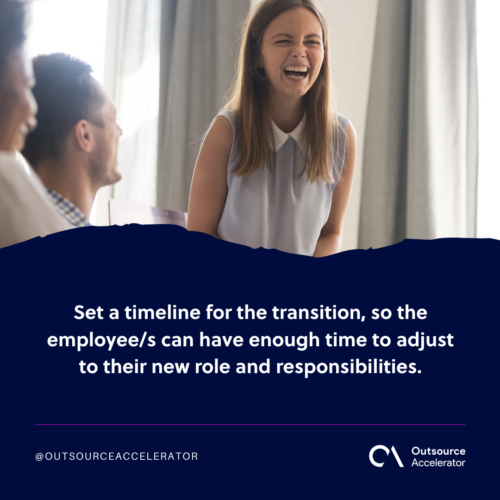6 essential tips for successful employee transition

For some, human resources may be all about recruiting, training, and keeping employees highly motivated. Being a part of the human resource department, in reality, involves a lot of responsibilities.
As an HR manager, you are responsible for ensuring that individual staff members can keep improving their skills and capabilities.
In due time, deserving employees will get their most awaited promotions. Thus, whether it be lateral or vertical career growth opportunities, you need to have them undergo a smooth employee transition.
There are different ways to ensure successful employee transitions, and we’ll offer a better understanding of the process and essential tips in this guide.
Defining employee transition
Employee transition happens when a specific staff moves from one particular position or role to a new one. As mentioned, employee transition can either be lateral or vertical transition:
- Lateral – Also called horizontal transition, this involves the same level of tasks, skills, expertise, and responsibilities. In lateral transition, employees will have the same level of job hierarchy, including their pay range.
- Vertical – Also known as promotion, this happens when employees transition from one job title to another in an upward trajectory.

4 reasons why employees transition to new job roles
There are various reasons why individual employees go through employee transition. Here are the main reasons for employee transition:
Workforce reduction
This happens when a company doesn’t have enough workforce. As a result, leaders have to re-assign and transition specific employees to critical job functions.
Sharing of knowledge, skills, and experience
Employee transition also happens when two or more companies exchange workers for some time for the purpose of knowledge sharing. This is typically for employee training or exchange of experiences.
Job reallocation
This happens when employees are transferred to positions with similar roles, responsibilities, and skills. This aims to boost work productivity and development within the organization.
Job promotion
This is when an employee transitions to a higher-level job function. Job promotions often entail transitioning to greater responsibilities and leadership roles.
6 tips for successful employee transition
These essential tips can help you have a smooth and less stressful employee transition. They apply to all types of employee transitions within your organization.
Relay the news to the concerned employees
Make time to relay the news personally, and have a sit-down talk with the particular employee/s privately. Avoid giving the information through email or call as it undervalues the important news.
Do not forget to explain why the staff has been chosen to go through employee transition. Highlight the specific skills and knowledge that the employee needs to use in the new job role. Of course, let the staff know that the company is in full support of the said transition.
Establish a lead time
Set a timeline for the transition, so the employee/s can have enough time to adjust to their new role and responsibilities.
An employee transition process usually lasts up to 90 days. During their lead time, let them work on their turnover tasks and train their replacement. This is also an ideal time to prepare them for their new role in the company.

Provide the right training
Consider employees on transition as new hires. Although they will still be working in the same company, they will not be having the same job functions and, in some cases, the same department.
Treat this process as if you are onboarding newly hired employees, and provide them with the same training as you would give new hires.
Set specific goals
Set target goals for your transition process. This will help employees get fully acquainted with their new functions and achieve a successful transition.
See to it that the goals are attainable. You wouldn’t want them to feel overwhelmed and pressured to fulfill their new roles.
Conduct a meeting with the departments involved
For employees transitioning to new departments, it is best to conduct a transparent meeting with both the staff’s former and new departments.
Take this opportunity to discuss the transition, clarify misunderstandings, and explain the changes it entails. More so, it will encourage both departments to maintain transparency within the organization and promote collaborative work.
Don’t rush the employee transition process
Lastly, do not rush the entire employee transition process. Allow them to test the waters by having a trial run for their new position. This way, you can determine whether they are a perfect fit for the job role.







 Independent
Independent




